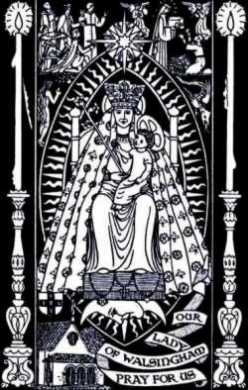
Some of the candles around the wall. A notice towards the back remarked that a kind person had given some £50 many years back to feed the poor of the Parish, and that the money was distributed as bread, given that the earest bakery was probably the famous Cheshire Smokehouse, I was tempted to apply. The fact that the sign was at lest a hundred years old put me off.
 The nave.
The nave.  Baptism of Christ. The windows were very good, in a bright, Victorian way. I'm more Burne Jones myself.
Baptism of Christ. The windows were very good, in a bright, Victorian way. I'm more Burne Jones myself.One of the frescos between the clerestory windows.
The choir, or quire.

Altar frontal.

A magnificent sedilia. I wonder if it used to be a Gethsemane house?

The Tree of Life East window.


The Saxon Chapel in the Churchyard.

South wall of the Church.

Painted ceiling in the porch.
Today I was in Prestbury, the Parish Church of which, St Peter's, was built from 1220. It is notable for having a Saxon Chapel in the grounds, now used as a choir vestry but there are plans to convert it back into a chapel, so maybe there will be a future Anglican Wanderings High Mass day out in there, to further our tour of Saxon and Norman Chapels in the North West. This is from their website...
The Norman Chapel stands close to the present Church, and was probably built to replace a timber-framed Saxon church. It has a beautiful Norman doorway, above which is a carved tympanum on which a figure thought to be King Richard Coeur de Lion suggests a date for the chapel of between 1190 and 1199. The chapel was in a ruined and roofless state until it was repaired and roofed by Sir William Meredith of Henbury in 1747. The windows of the chapel were dedicated in memory of Ann Rogers, wife of the then Vicar of the parish, in 1977.
Prestbury is famous for two things, it's undeniable beauty and a certain, shall we say, happiness with their lot from the residents, picked up on by AA Gill, a writer, in a recent Sunday Times article, where he lampoons the residents mercilessly, in so doing proving that he can be every bit as obnoxious as he suggests that they can be. Whatever the truth of this may be I do not know, or care, but the Church impressed me very much.
The most noticeable feature is the stained glass of the root of Jesse, or the tree of life, which dominates the chancel from the East wall. Under this is a well appointed altar with a fine frontal, unfortunately pulled forward to face West. Around the walls are rows of candles , whilst high up in between the clerestory windows are paintings of the Apostles. The tallest piece of furniture is the chancel screen which alas, is itself topped with the coat of arms of the monarch, giving an idea of the principles of Georgian Church reordering, at a time when the Church was the wealthiest and most powerful arm of the machine of state. The ceiling in the porch warrants a look, with it's striking design of coloured bars and monogrammes giving a taster of what may have been before the reordering. It was impressive, in a Church which is in such a fine village and which clearly plays host to many society weddings, (as evidenced by the braying men and clattering women outside the local restaurant!) that daily prayer was advertised as being said twice daily and there were three weekly Masses.








_Black_s_s_s_s_s.jpg)
